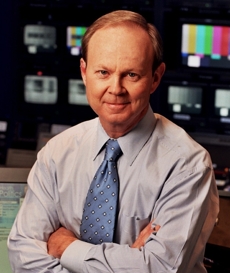By GREGORY HOPSON
T-Maître Pierre’s Family Restaurant was a Louisiana institution. The kind of place where generations gathered over steaming mountains of boiled crawfish, spicy corn, and seasoned potatoes. A place where Clifton Chenier’s Louisiana Blues & Zydeco played in the background and the waitstaff wore starched white shirts with bright-colored bow ties. The walls were plastered with faded photos of people smiling. Nobody knew who they were anymore, but they felt like family.
Pierre Thibodeaux, the founder, made sure every customer was treated as if they were indeed family. So it was a bit ironic that when he passed away, he had no heirs.
Within the week, the restaurant was acquired by multi-million-dollar developer O. B. Noxious, who addressed reporters beneath a banner that read:
MAKE CRAWFISH AMAZING AGAIN
“They call these little lobsters crawfish. Very smart. I like that. We’re keeping that name. Everything else? Outdated. Inefficient. Sad. We’re going to take this failing shack and turn it into the greatest restaurant the world has ever seen. People will come from everywhere and say, ‘Wow! I’ve never had crawfish this good. It’s the best anyone has ever tasted.’”
To oversee the transformation, Noxious brought in Otto Maladore, a consultant known for running billion-dollar companies and doing math in his head (where he also did all of his research).
Maladore spent thirty minutes walking the property, leaning over this, pressing on that, and stepping back from things while shaking his head. It wasn’t long before he issued his report to the press:
- Excess Labor: “Wait staff, custodian, dishwasher? None of them cook so we’re wasting money on them. Eliminate all of those positions.”
- Menu Simplification: “Boiled crawfish outsells everything. Eliminate everything else. Eliminate the menu itself. Menus are nothing more than administrative bloat.”
- Décor: “We will have the best of everything. Those photos are faded and were low quality when they were new. Remove them.”
- IT Modernization: “Found an IBM 5150 still running their books. This fascinates me-and concerns me-on so many different levels.”
- Fixed Costs: “This place is hemorrhaging due to indirect costs. Forty percent of revenue on facilities and administration? That’s insane. Ten percent is more than enough for a place like this! But we’re far more generous and much more compassionate than people give us credit for. So we’re not going to cap it at 10%. We’re going to bump it all the way up to 15%!”
The changes happened quickly-literally overnight.
The next day when customers showed up, they found no music. No waiters. No ambiance. Just folding chairs, a beat-up old card table, and flickering fluorescent lights (they were told the remodeling would be done later). The walls were bare except for a sign that read:
T-MAÎTRE PIERRE’S CRAWFISH
READ CAREFULLY!!!!!!
- Proceed to the back parking lot and sign in.
You will be assigned a ten-minute time slot for boiling.
- You will receive:
a. Live crawfish
b. Unshucked corn
c. Potatoes (with high-quality dirt: pH between 6 and 6.5)
- Boiling pot pre-heated to exactly 212°F.
DO NOT ADD OR REMOVE WATER!!!!!!
- Spice levels are pre-set.
- Extra napkins: $0.25 each
- IMPROPER DISPOSAL OF CORN HUSKS: 10% surcharge
- Failure to remove crawfish on time results in meal forfeiture.
NO EXCEPTIONS, NO REFUNDS!!!!!
A middle-aged man in a Ragin’ Cajuns hat read the instructions aloud. Then he looked around at the solemn-looking patrons waiting in line behind him. The place was quiet except for a few muffled noises from the kitchen. He removed his cap, looked heavenward, paused, and muttered:
“Mais, ça, c’est pas bon.” (Man, this is no good.)
By the end of the week, two of the three chefs had had enough of renting pots and pans and arguing over burner rights. They moved to California, where a Chinese restaurant offered a fully equipped kitchen and covered indirect costs. Within weeks, they’d introduced Admiral Pierre’s Crawfish, featuring crawfish imported from China-descendants of Louisiana crawfish accidentally introduced there in the 1930s.
Back in Louisiana, the rain was coming down harder and the lone remaining chef was standing ankle-deep in a puddle, scolding a water-logged customer for being thirty seconds late getting his crawfish into the pot.
The Moral
This is what happens when outsiders impose arbitrary cost caps in the name of “efficiency.”
T-Maître Pierre’s didn’t fail because of bad crawfish. It failed because it lost the infrastructure that made the meal possible-pots, burners, tongs, and the people. The chef, once celebrated for his recipes and skill, now stands in the rain, powerless to cook without the tools he depended on. The recipes remain, but customers must now struggle to bridge the gaps themselves, leaving behind the joy and ease of a shared meal.
NIH’s Facilities and Administrative (F&A) cap is no different. It slashes funding for the very essentials that enable research to thrive: lab space, equipment, compliance staff, and the humans who know how to maintain complex machinery like autoclaves. Researchers, once empowered by infrastructure and expertise, are left to watch their innovations stall as benefactors scramble to piece together what’s missing.
At T-Maître Pierre’s, you’re stranded in the rain, struggling to figure out how to get crawfish boiled properly. And when you ask for help, the chef responds:
“Je suis l’uniq qui reste, pis ça c’est tout ce que j’ai.”
(I’m the only one left and this is all there is.)
Under NIH’s 15% cap, your research institution is trying to fund an autoclave by tearing its couch apart to find any loose change that may have fallen out of visitors’ pockets. And even that source is drying up-since PayPal and Venmo don’t have loose change.
Gregory Hopson works remotely from Baton Rouge, Louisiana as a Business Intelligence Developer for Emory Healthcare in Atlanta, Ga.












